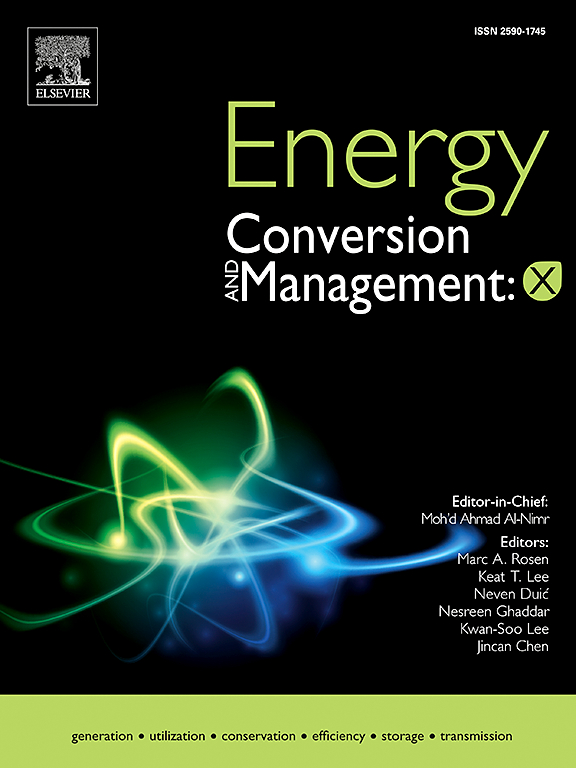仿生风力发电机效率的静态气动分析:模拟婆罗洲樟脑种子叶片设计及其平行板布置
IF 10.9
1区 工程技术
Q1 ENERGY & FUELS
引用次数: 0
摘要
受婆罗洲樟脑种子旋转下降的启发,本研究采用其弧形翼段进行涡轮叶片设计,并使用计算流体动力学模拟建模来预测功率和扭矩。在第一阶段,在不同的折叠轴和折叠角配置下,对五种类型的种子翅膀进行了建模。结果表明,3型翼具有最高的峰值功率系数(0.4328)和扭矩(2.1310 Nm),因此选择其作为第二阶段。这一阶段涉及设计具有不同折叠次数和不同折叠轴和折叠角度水平的平板叶片,以经济有效的方式实现种子的自然几何形状。结果表明,四倍配置的峰值功率系数达到了0.3637,其次是两倍配置的峰值功率系数为0.3510,表明性能差异很小。这表明,随着折数的增加,峰值功率系数收敛到一个最大值。因此,这种双折叠设计成为这种生物风力涡轮机的一种实用、经济的选择。第一阶段和第二阶段的研究结果表明,弧形和平板仿生模型在风力涡轮机工业中都是可行的和有竞争力的。本文章由计算机程序翻译,如有差异,请以英文原文为准。
Static aerodynamic analysis of bio-inspired wind turbine efficiency: Modeling Borneo camphor seed blade designs and their parallel plate arrangements
Inspired by the rotating descent of the Borneo camphor seed, this study employs its cambered wing sections for turbine blade design, modeled using computational fluid dynamics simulations to predict power and torque. In phase one, five types of seed’s wings are modeled under varying fold axis and fold angle configurations. The results identify that wing type 3 exhibits the highest peak power coefficient (0.4328) and torque (2.1310 Nm), leading to its selection for phase two. This phase involves designing flat-plate blade counterparts with varying fold numbers and different levels of fold axis and fold angle to implement the seed’s natural geometry in a cost-effective manner. The results demonstrate that the four-fold configuration achieved a high peak power coefficient of 0.3637, closely followed by the two-fold configuration at 0.3510, indicating a minimal performance difference. This indicates that the increase of fold numbers makes peak power coefficient converge to a maximum value. The two-folds design, therefore, emerges as a practical, cost-efficient option for such bio-inspired wind turbines. The findings of phase one and phase two indicate that both cambered and flat-plate biomimetic models are viable and competitive in the wind turbine industry.
求助全文
通过发布文献求助,成功后即可免费获取论文全文。
去求助
来源期刊

Energy Conversion and Management
工程技术-力学
CiteScore
19.00
自引率
11.50%
发文量
1304
审稿时长
17 days
期刊介绍:
The journal Energy Conversion and Management provides a forum for publishing original contributions and comprehensive technical review articles of interdisciplinary and original research on all important energy topics.
The topics considered include energy generation, utilization, conversion, storage, transmission, conservation, management and sustainability. These topics typically involve various types of energy such as mechanical, thermal, nuclear, chemical, electromagnetic, magnetic and electric. These energy types cover all known energy resources, including renewable resources (e.g., solar, bio, hydro, wind, geothermal and ocean energy), fossil fuels and nuclear resources.
 求助内容:
求助内容: 应助结果提醒方式:
应助结果提醒方式:


